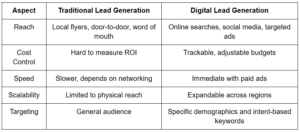For insulation contractors—especially spray foam specialists—finding new customers can be just as important as delivering quality installation. This process of attracting, capturing, and nurturing potential clients is known as insulation lead generation. Done effectively, it ensures a steady flow of projects, minimizes downtime, and keeps a business competitive in a crowded market. But how exactly does insulation lead generation work? What strategies make the biggest impact? And how do modern digital tools help connect homeowners, builders, and commercial property managers with contractors? This article explores these questions in detail and provides a practical breakdown of how lead generation applies specifically to the insulation industry.
What Is Insulation Lead Generation?
Insulation lead generation is the process of identifying, attracting, and converting people or businesses interested in insulation services into potential customers. In simple terms, it connects demand—property owners needing insulation—with supply—contractors offering solutions. Unlike broad advertising, insulation lead generation is highly targeted, focusing on connecting contractors with prospects who are already motivated to solve comfort, energy, or building performance issues.
Key Elements of Insulation Lead Generation
- Awareness: Making sure customers discover insulation services when researching solutions.
- Interest Capture: Engaging potential clients through content, ads, or directories.
- Conversion: Encouraging prospects to call, request a quote, or schedule an inspection.
How Insulation Lead Generation Works
Lead generation is not a single action but a step-by-step funnel that guides prospects from initial awareness to becoming paying clients.
Awareness Stage: Reaching the Right Audience
At this stage, the goal is to show up where people are looking for insulation solutions. Search engines, social media, and local directories are primary channels. Contractors aim to rank for terms like “spray foam contractor near me” or “home insulation upgrades.”
Engagement Stage: Building Interest
Once prospects discover a contractor, they need reasons to engage further. Content such as blogs, guides on energy efficiency, or before-and-after project photos helps build trust and authority.
Conversion Stage: Securing the Lead
The final step is motivating the potential customer to take action. Calls to action like “Get a Free Estimate” or “Schedule a Home Energy Audit” drive prospects to submit their details, officially becoming a lead.
Digital Channels Driving Insulation Lead Generation
Several digital marketing channels work together to capture and convert insulation leads.
Search Engine Optimization (SEO)
SEO helps insulation companies rank higher in search results when customers look for insulation services. Optimized websites with strong local SEO signals build trust and generate consistent organic traffic.
Pay-Per-Click (PPC) Advertising
Paid ads on Google and Facebook allow contractors to target specific geographic areas and demographics, ensuring they reach homeowners or businesses actively seeking insulation services.
Business Directories and Local Listings
Platforms like Google Business Profile, Angie’s List, and Yelp provide visibility in local searches. Complete profiles with reviews and photos help generate inbound calls.

Content Marketing
Publishing blogs, case studies, and home energy guides answers common homeowner questions. This builds credibility and positions the contractor as a knowledgeable expert.
Email and Retargeting
Leads that don’t convert immediately can be nurtured with follow-up emails, seasonal promotions, and remarketing campaigns that remind them of the service.
Traditional vs. Digital Lead Generation for Insulation Contractors

Why Lead Generation Is Critical for Insulation Businesses
Without lead generation, insulation companies rely on inconsistent referrals or seasonal demand spikes. An effective system provides:
- A steady pipeline of residential and commercial projects
- Better predictability in revenue and staffing needs
- The ability to outperform competitors who only depend on referrals
- Greater visibility in local markets
Key Takeaways for Insulation Contractors
Insulation lead generation is more than advertising—it’s a structured process of attracting, engaging, and converting the right audience into paying customers. Digital strategies such as SEO, PPC, local listings, and content marketing create consistent growth opportunities for spray foam contractors and insulation businesses. By building visibility, trust, and engagement, contractors ensure they stay competitive in an industry where demand depends on energy efficiency, comfort, and sustainability needs.
FAQs About Insulation Lead Generation
How long does it take to see results from insulation lead generation?
Results depend on the method. SEO can take 3–6 months to build momentum, while PPC ads or directory listings can produce leads within days. A balanced approach ensures both short-term and long-term returns.
Do contractors need a website for effective lead generation?
Yes. A professional, optimized website serves as the central hub for all marketing activities. Even if leads come from ads or directories, customers usually check the contractor’s website before contacting.
What role does customer trust play in lead generation?
Trust is critical. Reviews, testimonials, and project photos reassure potential clients. The more trust signals a contractor shows online, the more likely prospects will convert.
Is digital lead generation more cost-effective than traditional methods?
In most cases, yes. Digital campaigns allow precise targeting and measurable ROI, while traditional methods like flyers or cold calls are harder to track and less efficient.
Can insulation lead generation be outsourced?
Yes. Many contractors work with specialized agencies that handle ads, SEO, and content creation. Outsourcing saves time and provides access to expertise, but contractors should still monitor performance closely.
